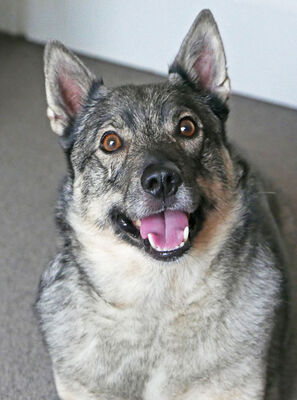How to Shoot in Manual Mode
Mar 17, 2024 00:33:02 #
Ysarex
Loc: St. Louis
Mac wrote:
I started this thread to help anyone who might want to try Manual Mode but was hesitant to start. You have muddied the waters with all your gobbledygook and have detoured the thread from its intended purpose. You called my post BS,
No, I called the article BS, not your post.
Mac wrote:
but in my opinion everything you have posted in this thread is nothing more than pure BS. You have done a disservice to everyone who wants to learn or try something new. You have been combative and disrespectful in you posts. I think your only interest in this thread is to demonstrate that you know something, not to help anyone.
I warned against the spread of misinformation and I think that's helpful.
Mar 17, 2024 00:42:18 #
Ysarex wrote:
I warned against the spread of misinformation and I think that's helpful.
How is redirecting the subject helpful to anyone? I hope that those who want to learn were able to disregard your interference.
Mar 17, 2024 00:48:35 #
Ysarex wrote:
I warned against the spread of misinformation and I think that's helpful.
You could have made your comments helpful to anyone who wanted to learn Manual Mode instead of focusing on minor technicalities. If you wanted to delve into those technicalities you could have started a new thread to expound on them.
Mar 17, 2024 01:09:01 #
Ysarex
Loc: St. Louis
Mac wrote:
You could have made your comments helpful to anyone who wanted to learn Manual Mode instead of focusing on minor technicalities.
terryMc did that in the first response to your post.
And again in the 8th response; "The "I want complete control" nonsense is a straw man."
The article's rationale; "The main reason to shoot in manual mode is that it gives you a lot of control. Far more than the automatic modes on your camera...."
Far more control than the auto modes like aperture priority or shutter priority, etc. is wrong. I call BS on that and so did terryMc.
Mar 17, 2024 01:12:08 #
Mac wrote:
I started this thread to help anyone who might wan... (show quote)
'I think your only interest in this thread is to demonstrate that you know something, not to help anyone.'
Yep.
Like many, initially, interesting photography subjects raised on UHH, this quickly deteriorated from a discussion into an competition, argument.
Sort of like watching children in a playground arguing that their dad is smarter than his dad, so Im smarter than you.
Entertaining tho.

Mar 17, 2024 02:26:11 #
Ysarex wrote:
Still no reference to refute now the four authoritative references I've provided that prove you're wrong. Are you going to whine for four or five pages now and still be wrong? ISO typically suppresses [downstream] read noise. Provide a link to a reference that says otherwise or stay proven wrong.
Increased ISO does not suppress read noise. Furthermore, it reduces dynamic range. These two immutable facts are known and understood by all of us. You can't deny this. If you do then you are not too bright.
The X100T is a modest performer with an analog ISO range from 200 to about 2500. The following applies only to the analog range.
You can use base ISO on this camera and take four images: EC+0, EC-1, EC-2 and EC-3 (only the first image might be ETTR). The shot noise would increase with each change of exposure. If you correct the brightness on the computer with the Exposure slider you would make that shot noise more visible, despite having used the same ISO which produced the same read noise.
Now use EC+0 with the ISO set to 200, 400, 800 and 1600 (all four shots might be ETTR). The shot noise will also increase with each change of exposure but the brightness will not need to be corrected on the computer. The read noise will increase with each change of ISO because of the reduction in exposure. What prevents this from producing disastrous results is that the shot noise is the primary contributor to the S/N ratio at low ISO settings. On a normal camera, shot noise does not actually start to affect the S/N ratio until you are about 4-5 stops below middle gray.
But there is a side effect to the first approach. By staying at base ISO, the deep shadows get pushed deeper, closer to the read noise level. As the ISO goes up, the detail and tonality in the shadows also deteriorate independently from the noise. This may be hard to fix.
I don't need a reference to post this straightforward example. Unless, of course, you are incapable of following the logic. If that's the case then there is no hope for you.
Read noise from ISO 200 to 1600 - increases by just under a stop at each doubling of the ISO
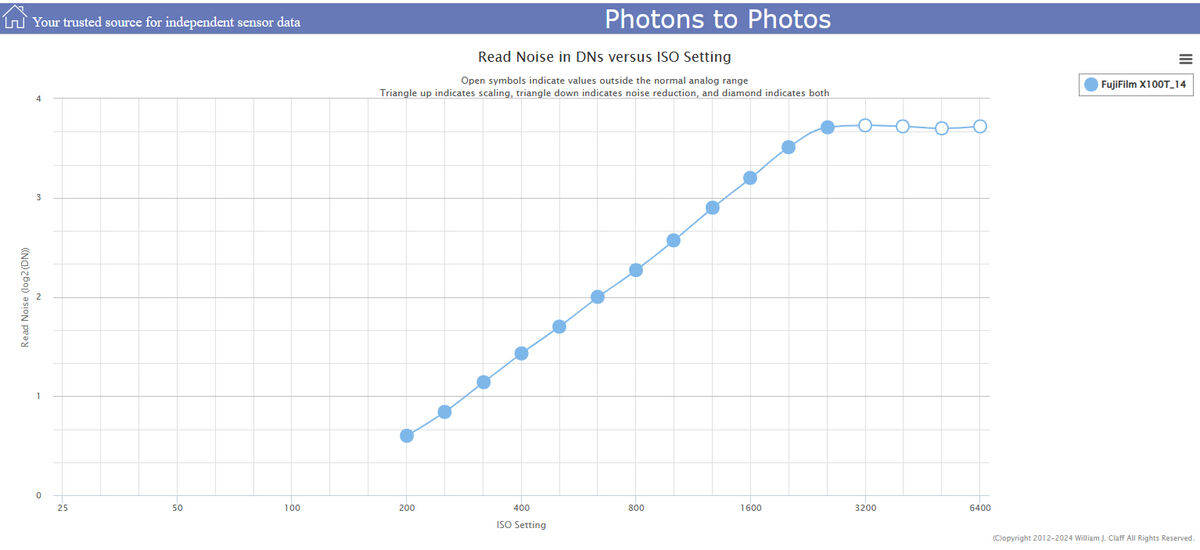
(Download)
Dynamic range from ISO 200 to 1600 - increases by about a stop at each doubling of the ISO
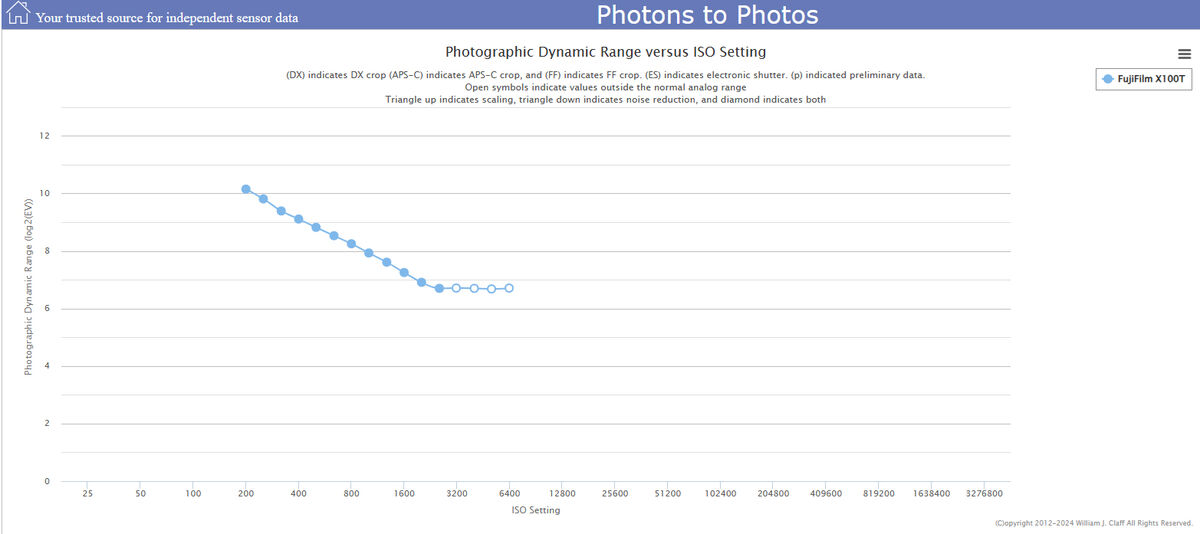
(Download)
Mar 17, 2024 05:24:29 #
selmslie wrote:
But there is a side effect to the first approach. By staying at base ISO, the deep shadows get pushed deeper, closer to the read noise level. As the ISO goes up, the detail and tonality in the shadows also deteriorate independently from the noise. This may be hard to fix.
To show what I mean, here are two versions of the same scene along with their information from RawDigger.
The ISO 1600 version indicates that there are about 7MP (out of 16MP) in the UnExp (underexposed) range.
The ISO 200 version indicates that there are about 14MP in the UnExp range.
The selected area (gray box) graphically illustrates the problem I pointed out. By failing to expose properly in the first place, the visible noise seems to be about the same. But the shadows recorded at ISO 1600 stand a chance of being recovered. At ISO 200 the potential for shadow recovery is greatly diminished.
Since the two image seem to look about the same, the conventional interpretation would be that the X100T is ISO invariant. Who knew? But just try editing such an image to recover the shadow detail and tonality. You will be disappointed with the second version.
We have learned about ETTR for a good reason.
1/500s f/2.5 ISO 1600
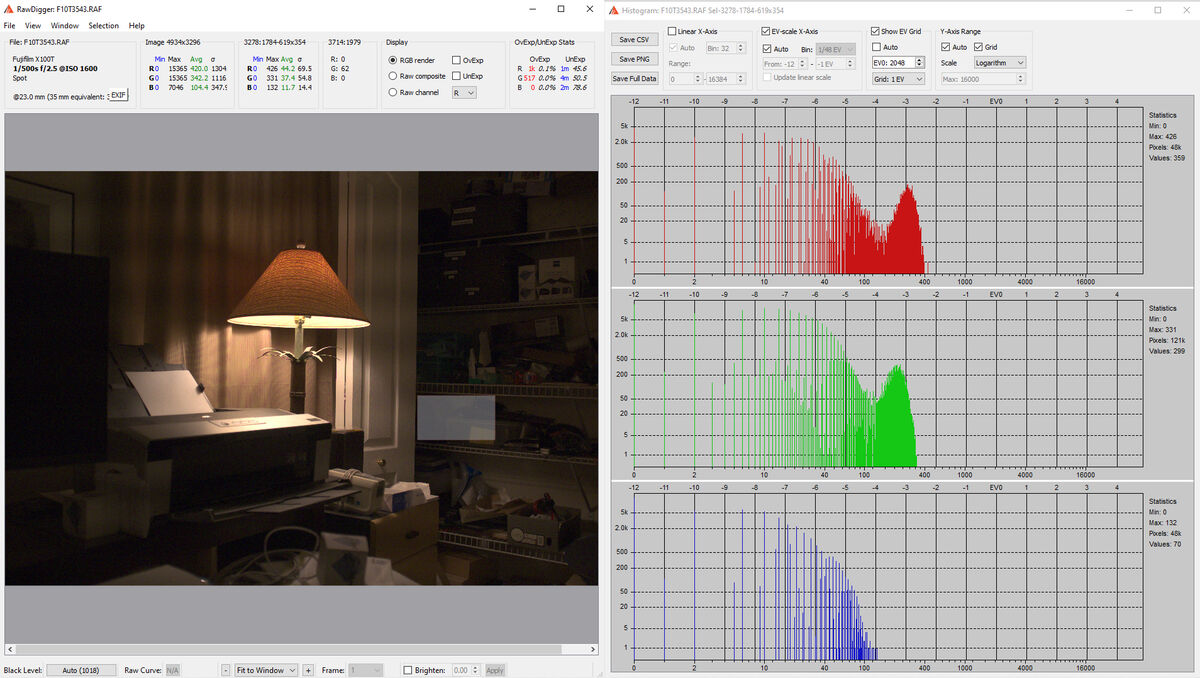
(Download)
1/500s f/2.5 ISO 200, corrected in Capture One by moving the Exposure slider to +3
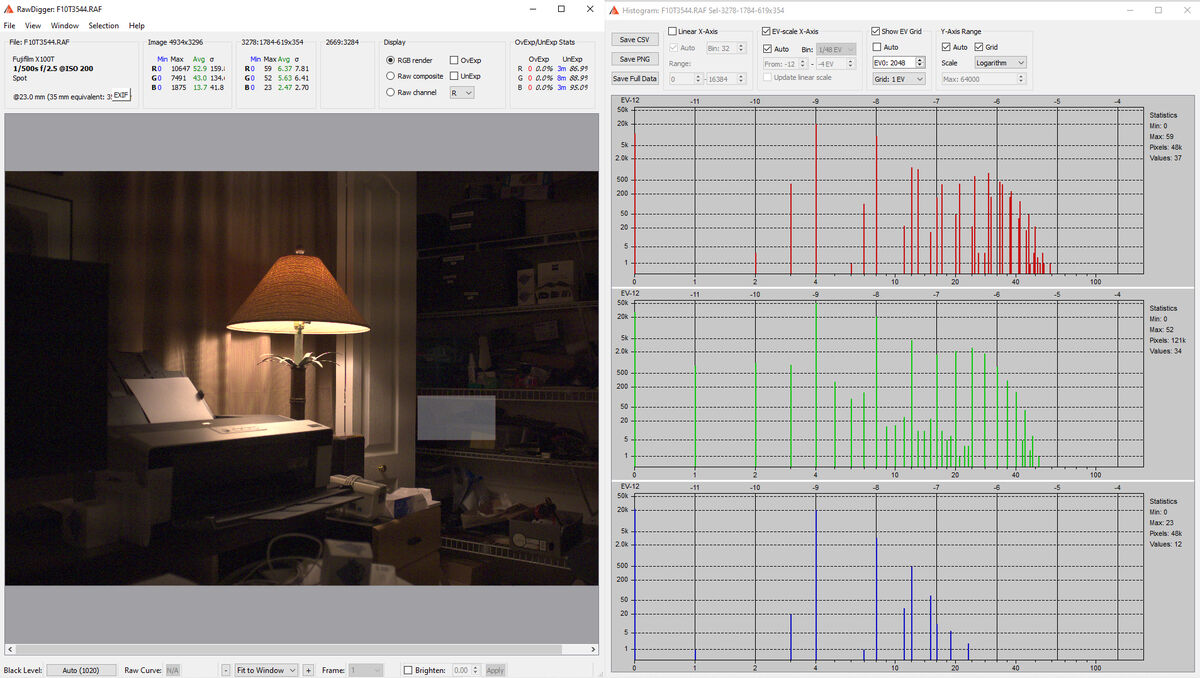
(Download)
ISO 1600
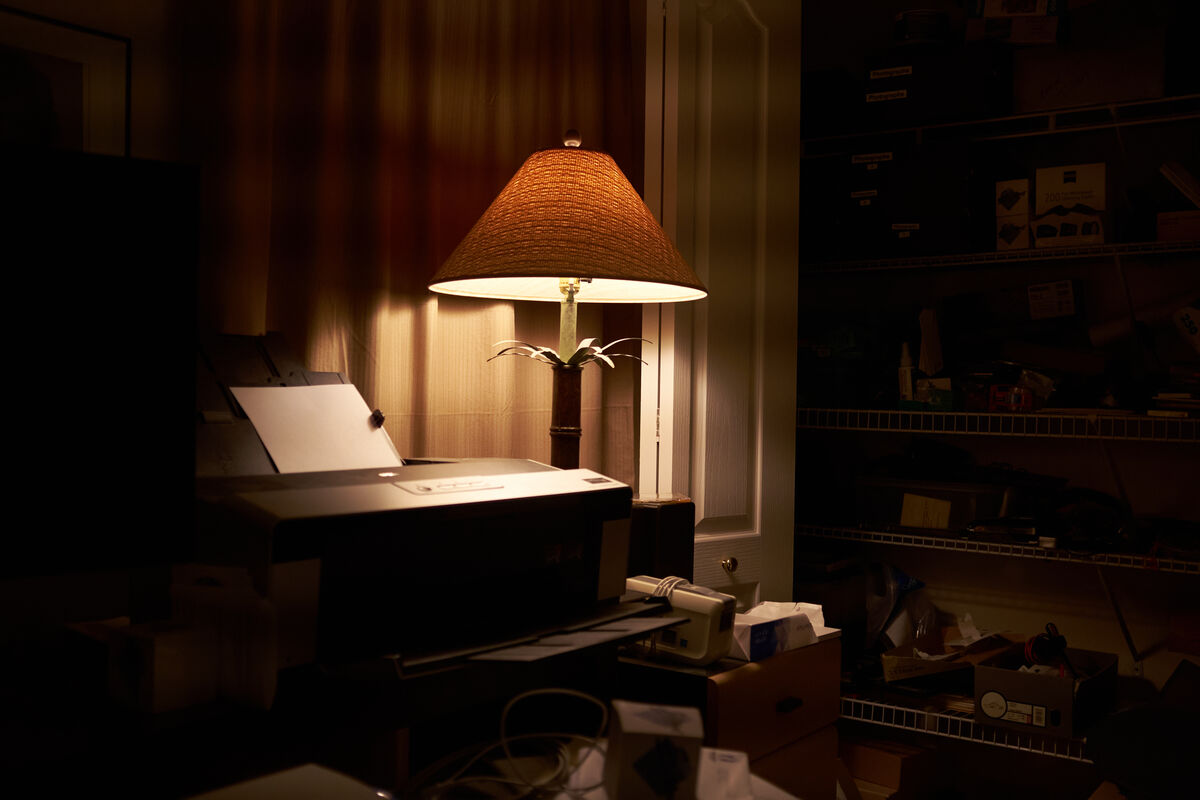
(Download)
ISO 200
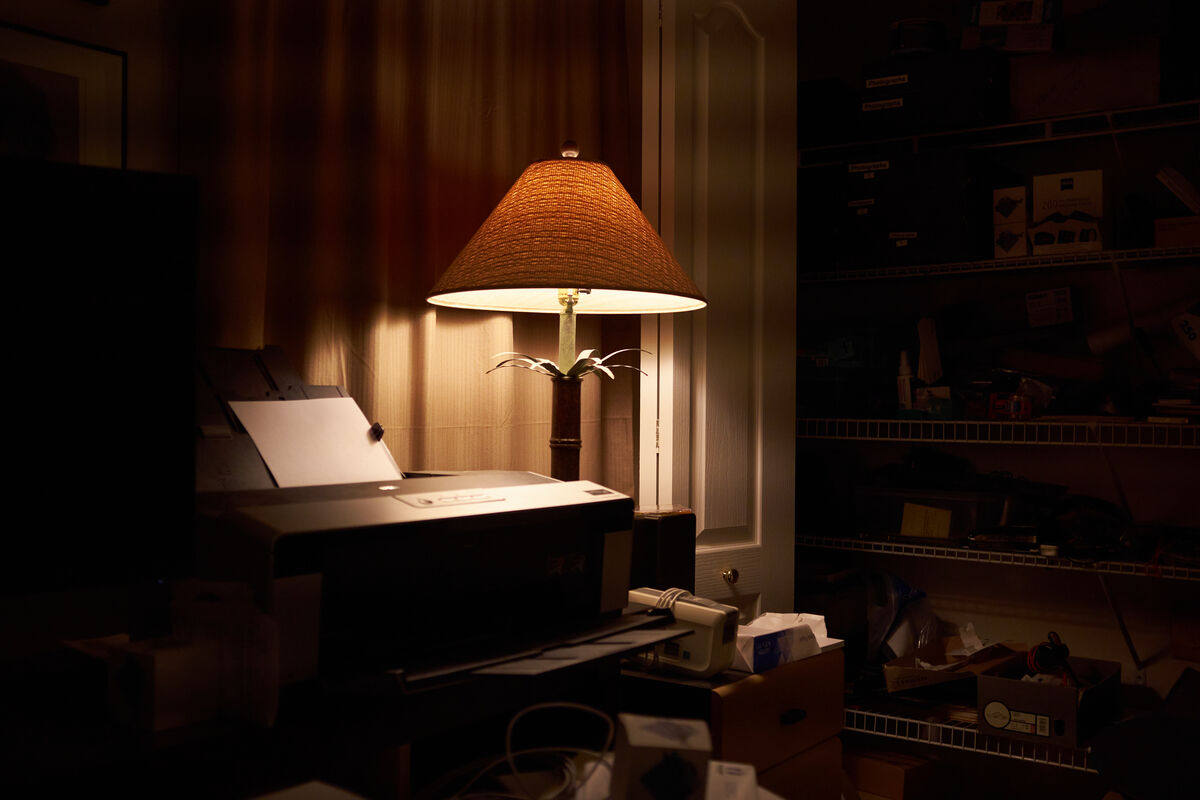
(Download)
Mar 17, 2024 05:58:53 #
Ysarex wrote:
The article's rationale; "The main reason to shoot in manual mode is that it gives you a lot of control. Far more than the automatic modes on your camera...."
Far more control than the auto modes like aperture priority or shutter priority, etc. is wrong. I call BS on that and so did terryMc.
Far more control than the auto modes like aperture priority or shutter priority, etc. is wrong. I call BS on that and so did terryMc.
That makes both you and terryMc wrong.
Why is it that when you don't understand something you have to call it BS?

When you are using full manual you can still look at the camera's meter indication and judge whether you want to follow it or not. You don't have to surrender to it.
When you hand over control of the exposure to your camera's meter you have to watch it like a hawk. The slightest change in framing (when I was capturing the two images above the indicator was moving all over the place) might change the exposure/ISO without asking you first. That means that the camera's meter is in control, not you.
Of course, if you don't have any confidence in your own judgement, letting the camera make decisions for you might be your best choice. If you think that your camera is smarter than you are, you may be right.
Mar 17, 2024 07:14:37 #
You should start with manual mode. If you don't then forget it. It's not neccessary in advance stage.
Mar 17, 2024 08:16:30 #
Ysarex
Loc: St. Louis
selmslie wrote:
Increased ISO does not suppress read noise.
You are wrong.
I see you still have nothing.
You have been proven wrong now with four authoritative references.
Here's a fifth reference that proves you're wrong: "1) Boosting the signal (and any noise, including photon shot noise, already embedded in it), helps to minimize the impact of any noise that would occur after the programable gain amplifier, but before analogue to digital conversion (sometimes called downstream read noise)
2) Boosting the signal (and any noise...) helps to better match the magnitude of the thing you're trying to capture to the range of the ADCs (ie: make sure your signal isn't being encoded in the last few bits of your ADC, with the rest of the range potentially going to waste)." https://www.dpreview.com/forums/thread/4721030
You may supply a rebuttal reference from an authoritative source or remain proven wrong.
Mar 17, 2024 08:26:10 #
Ysarex wrote:
You are wrong. ...
You may supply a rebuttal reference from an authoritative source or remain proven wrong.
You may supply a rebuttal reference from an authoritative source or remain proven wrong.
I don't need to do that.
Quoting other sources, usually out of context, proves nothing. If you can't post you own real examples you are proving nothing except that you are hopelessly ignorant of the subject.
I have already supplied plenty of proof using real examples that anyone else can replicate by following what I did.
You can't back up what you say because you don't know what you are talking about.
Mar 17, 2024 08:29:54 #
Ysarex
Loc: St. Louis
selmslie wrote:
To show what I mean,
You are not an authoritative source.
As expected you still have nothing. Provide a rebuttal reference to an authoritative source or you remain proven wrong.
Mar 17, 2024 08:30:21 #
BebuLamar wrote:
You should start with manual mode. If you don't then forget it. It's not necessary in advance stage.
I always use full manual because it puts me, not the camera, in control. I'm not perfect but I seldom make mistakes because I know what I want. The camera can't read my mind. It's just a dumb instrument.
I only use the camera's meter as a reference. Highlight warnings are more reliable.
Mar 17, 2024 08:31:35 #
Ysarex wrote:
You are not an authoritative source.
As expected you still have nothing. Provide a rebuttal reference to an authoritative source or you remain proven wrong.
As expected you still have nothing. Provide a rebuttal reference to an authoritative source or you remain proven wrong.
I know a lot more about exposure and noise than you ever will. You are just not that smart.
Mar 17, 2024 08:36:38 #
Ysarex
Loc: St. Louis
selmslie wrote:
When you hand over control of the exposure to your camera's meter you have to watch it like a hawk. The slightest change in framing (when I was capturing the two images above the indicator was moving all over the place) might change the exposure/ISO without asking you first. That means that the camera's meter is in control, not you.
The camera's metering system is a tool that is adjustable and controllable. The article claimed that using Manual mode provides far more control than using modes like A or S priority and that's false. See the reference terryMc posted.
If you want to reply, then register here. Registration is free and your account is created instantly, so you can post right away.

